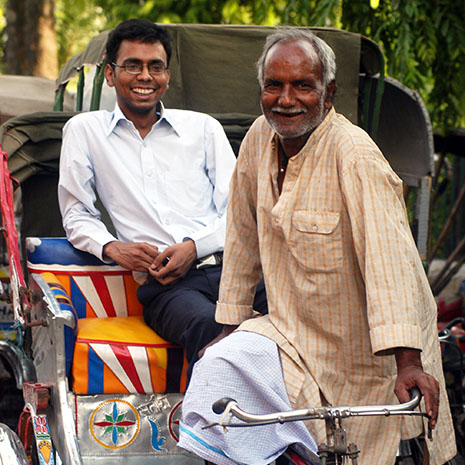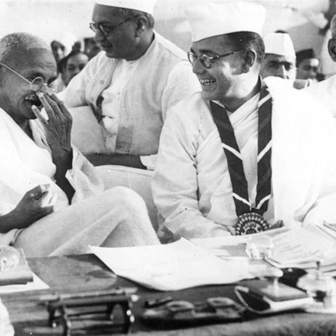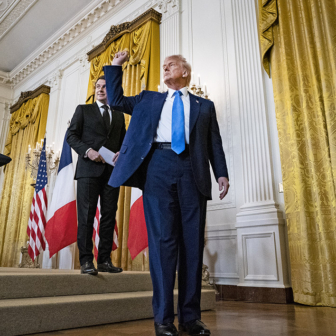IT’S A TUESDAY afternoon in early October and Prakash is taking me to his afternoon preparatory class at Vajiram & Ravi, one of the dozens of institutes in Delhi that train candidates for India’s civil services exams. Still buoyant despite two failed exam attempts, Prakash is heading for a class that prepares students for the optional paper in psychology he hopes to tackle next year. The classes last two and a half hours and run seven days a week for twenty weeks or more.
The classroom is already half full, with around 200 chairs crammed into a room that can’t be much more than fifty square metres. Once the students have manoeuvred their way into a seat, it’s unlikely they’ll be able to get out again until after the class. And it’s unlikely they’d want to. The scarcity of places and the high cost of the course spell a dropout rate of less than 1 per cent. Though October marks the tail end of the course, and several students are immersed elsewhere in preparation for the fast-approaching Mains exams, the room fills quickly. Prakash points out three young women – a doctor, an engineer and a journalist – sitting pressed up behind us.
Mukhul Pathak, a well-known psychology lecturer whose coaching successes have made his subject a popular choice for the optional paper, marches up to a narrow podium and begins his class. Within seconds he has the entire room in uproarious laughter. Dressed in a striped cream and peach short-sleeved shirt and moss-green corduroy trousers, energetic and humorous, he shows no trace of having taught this same course perhaps twice a year for the past fifteen years. On his wrist hangs a thick gold watch of such proportions that from the fifth row I can see that it runs ten minutes fast. He radiates commitment, efficiency and affluence.
The subject of today’s lecture is effective communication, which Pathak demonstrates as much as he teaches. In a style his students say is unusual among Indian teachers, he layers anecdote upon anecdote to elicit frequent, generous laughter, then dictates his key points from a stack of papers on the lectern at his elbow. As the afternoon sunlight pushes through the dusty windows and mingles with harsh fluorescent light, two hundred heads are bent, almost touching, over thick notepads, taking down his every word. In the distance, ignored by the students, is the rumbling of swollen buses, the honking of horns and the shrill ringing of cycle rickshaw bells. This is like no lecture I have been to before. No one is looking out of the window, doodling or languidly compiling an SMS. The taut, focused energy is of the kind that raises the hairs on the back of your neck.
IF THE THOUGHT of memorising the bathing habits of the one-horned rhinoceros or the virtues of the Wild Ass Sanctuary of Gujarat leaves you with a feeling of mild vertigo, the Indian civil services examinations might not be for you. In fact, if you happen to be sitting the exams over the next three weeks, as some 12,000 eligible Indians across the country will be, you’d better hold on to your table tightly. Questions on topics as diverse as folk dances, constitutional developments, religious and social reforms and the usefulness of camels, or even the type of winter northern India would experience in the absence of the Himalayas, could crop up in one of your exam papers.
Forget “Who Wants to Be a Millionaire?” – this is India’s toughest contest. And the potential prize is greater than anything money can buy. While a reference to the civil service in some countries will elicit a yawn, for many young Indians a career as a civil services officer sparkles with the allure of status, job satisfaction, government accommodation and top-notch marriage proposals. But much more than this, the civil services are an institution of critical relevance to society and social change in India. As a newly qualified Indian Administrative Officer, for example, your early postings will include the position of Collector in your assigned district. Far from fermenting in an office, you will be out in the field, perhaps surveying the land, picking up after a train crash or putting into practice a program of social uplift whose results will unfold before your eyes. Imbued with the authority of government and the omnipotence and benevolence that accompanies it, you might, almost literally, find yourself king of the district.
Ascending to such giddy heights isn’t easy, however. With a breathtakingly broad range of topics spanning a medley of exam papers, most civil services candidates will sit down to write what are colloquially known as “the Mains” after months, or often years, of punishing preparation. Whittled down from an original applicant pool of about 400,000 by a round of preliminary tests earlier in the year, most will have pursued a relentless campaign of fifteen-hour study sessions and daily attendance at costly coaching courses. As they pit their wits against up to six hours of papers each day, most of them won’t even be able to console themselves with the thought that this trying time will soon be over. The likelihood of passing through both sets of exams and excelling at a further, gruelling interview stands at about one in 10,000. And with a syllabus the size of the one they need to cover, it pays to repeat. And repeat. Of those who succeeded in the 2006 examinations, 73 per cent had made three or more attempts at the tough selection process.
The combined opportunity cost of incredibly low odds and extremely high investments – of time, money and emotional energy – are, quite frankly, as dizzying as the question papers. The fact that a majority of young Indians in their twenties opt to sit the exams more than once means that many of them will devote years to preparing and will miss out on other lucrative career opportunities in the process. Astonishingly, of the 7488 candidates who sat the Mains in 2006, over 300 were qualified doctors, dentists or vets, at least 1400 had a background in engineering, technology or IT, and nearly half held higher degrees in addition to the required bachelors degree. Yet the most popular of the services and posts covered by the civil services exams – the Indian Administrative Service, the Indian Foreign Service and the Indian Police Service – promise a chance to serve the nation, acquire job security in uncertain economic times, and attain instant levels of prestige that would require years of hard work and experience in other sectors. This kind of bounty makes the huge investment of precious years and energy in the career-critical twenties a worthwhile gamble.
Given the rapid expansion of India’s corporate sector since liberalisation took hold in the early 1990s, and the handsome remuneration packages private sector jobs now deliver, it seems hard to believe that the promise of a substantially less well-paid civil service career can still capture the imagination of young Indians. Yet at least one study suggests that, overwhelmingly, it does. In a July 2007 survey conducted by the Associated Chambers of Commerce & Industry of India, 80 per cent of the 300 young corporate sector executives questioned the idea that India’s most talented youths were being drawn towards the private sector. In their view, the top three branches of the civil services continue to harvest the best talent.
One senior officer I spoke to joined the Indian Administrative Service in 1991, around the time India’s corporate sector began to blossom. Despite the changes he has seen in the job market since his service began, he believes that the status and social position bestowed on those in the higher civil services are a distant dream for those working in the corporate world. That the rich dividends private sector employment offers are not enough to lure serving officers away from their posts is evidenced by an extremely low rate of attrition in the higher civil services. Of around 100 Indian Administrative Service officers in his batch, not a single one has left the service for the corporate sector.
Indeed, the enduring popularity of the civil services as a career of choice is reinforced by the continuously high numbers of exam applicants, the proliferation of preparatory coaching institutes in India’s major cities, and the broad media coverage enjoyed by the high scorers in the exam. Inspiring reports of likely and unlikely victors abound. Nearly every civil services aspirant knows the story of Govind Jaiswal, the son of an uneducated rickshaw vendor, who ranked forty-eighth among 474 successful candidates in his first attempt at the exam in 2006. And most will be familiar with the bizarre tale of Ashok Rai, a convicted rapist who was freed after achieving the seemingly impossible: preparing and qualifying for the civil services from behind bars at Delhi’s Tihar Jail.
LOOKING AROUND Pathak’s class at Vajiram & Ravi I begin trying to guess who might be successful in the coming exams. As students dressed in both western and Indian attire earnestly compile information in coloured spider diagrams or neat lists of bullet points, I try to imagine them settling a dispute in a remote village or attending a cocktail party in a distant diplomatic mission. While imagining these students’ successes is a source of pleasant contemplation, the obverse – failure and the huge disappointment it brings, often for entire families – is too heartrending to contemplate. I think back to a June article in The Hindu, India’s second-largest circulated daily English newspaper, which revealed “the other side” of the civil services dream. “The losers,” the author claimed, “virtually become nothings... With no alternative career in hand, they come out of the preparation phase at thirty or thirty-five, totally confused about the future.”
Such a prognosis seems a little dramatic, at least for the students I stay behind to chat with after the class. Vineet, aged twenty-one, is in his fourth year of an engineering degree, which he sees as a sensible back-up option should his attempts at the exam prove fruitless. Priya, twenty-five, the journalist who was sitting behind me in the class, may well have been driven to try out for the civil services by a frustration with the media sector and the limited chances it offers to bring about social change, but she nonetheless has a few years of work experience under her belt that will surely stand her in good stead if all else fails. Of course, I have been unable to speak to the most vulnerable candidates. They are the ones who either could not afford a place in a coaching institute such as this, or who rushed off after the class to a job that will only barely keep them afloat. It’s these aspirants, perhaps more than any others, who would benefit immeasurably from a system of recruitment that is sensitive to the risks inherent in dedicating precious young years to a cause with no guaranteed result.
That’s not to say that the patterns of recruitment and the types of aspirants to the civil services have remained static. In a system of selection that once strongly privileged the urban middle classes, the social base of the civil services is steadily expanding as a result of the growth of educational facilities outside urban centres and the introduction of a reservation system for the disadvantaged sections of Indian society. Members of India’s officially recognised “backward classes” can now draw on a host of measures aimed at ensuring no aspirant should be discouraged from taking the tests. The low admission fee of 50 rupees (a little over one Australian dollar) is waived for India’s former untouchables, now referred to as the scheduled castes, for example. Other disadvantaged groups, known collectively as the “other backward classes,” or OBCs, also benefit from certain concessions in the examination process. While the age bracket for admission is twenty-one to thirty for general candidates, and the permitted number of attempts at the exam stands at four, an eligible candidate from the OBCs can sit the exam up to seven times and compete up until the age of thirty-three. A member of a scheduled caste has until the age of thirty-five and an unlimited number of attempts.
Such measures have increased the attractiveness of the civil services exams for socially and economically disadvantaged young Indians: over 66 per cent of nearly 400,000 initial applicants to the exams in 2006 hailed from India’s scheduled tribes, scheduled castes and OBCs. While the proportion of candidates from these groups who were actually successful was lower, at 55 per cent, the high numbers of applicants, given the costs involved, is encouraging. Women, too, are entering the services in ever higher numbers, and with a greater chance of success. While 9 per cent of those appearing in the Mains examinations were women, they accounted for 21 per cent of successful candidates. Interestingly, the highest success rate of any group in the 2006 Mains comprised women among India’s scheduled tribes, 19.3 per cent of whom performed well enough in the exams to make selection, compared to an average success rate of 6.3 per cent.
Many aspirants believe that relocating to a major city to take coaching classes affords the best chance of examination success. India’s capital, Delhi, is unquestionably the country’s major centre for civil services exam preparation. Coaching institutes in the capital benefit from constant feedback from candidates as they return from exams and interviews, report on their experiences and thus assist in the updating of preparatory materials.
Moving to the capital to imbibe the atmosphere of a common struggle and join study groups is a key move for many civil services hopefuls, though it demands a financial outlay that might well be beyond their family’s means. A preparatory course for just one of the Mains optional papers costs somewhere between 30,000 and 40,000 rupees (approximately A$700 to $930). In recognition of this, the government sponsors a certain percentage of places in coaching institutes and even runs entire courses aimed at underprivileged youth. For Indians from less well-off families, study in Delhi must be financed by selling property, borrowing money or working a job alongside an already gruelling preparation schedule that leaves only a few hours for sleep.
Polishing the dreams of aspirants is a lucrative business. Newspapers, national and local, are brimming with adverts for intensive courses, and around a dozen exam preparation monthlies packed with past questions, new material and exam tips grace the majority of book stands in the capital. A glance at the Delhi edition of The Hindu reveals up to forty full-colour advertisements each weekday for institutes that train candidates for the civil services exams. Vajiram & Ravi is one of the best known – so well known that it needs no advertising at all. In business since 1976, its courses fill within twenty-four hours, with eager students queuing from midnight on the night before admissions open. Its fame and popularity is linked to the many success stories featured on its website, which records that the institute has produced the highest scoring qualifying exam candidate – known as the civil services “topper” – every year since 2000.
AMONG THE STUDENTS I talk to at Vajiram & Ravi is Shipra Sharan, a fourth generation descendant of Lal Bahadur Shastri, India’s third prime minister. A graduate in hospitality administration and management with an MBA from the University of Hyderabad, she has sampled many faces of India’s corporate sector, spanning hospitality, finance and the media. Two years ago a personal tragedy made her rethink her priorities and consider the development and welfare issues that affect the Indian nation. “I have tasted money,” she explains, “but even if I have 1 Lakh [100,000 rupees] in my pocket, when I go out onto the street, I won’t be able to get rid of the noise pollution.” Now pursuing a master of public administration in Delhi, she sees the civil services exams as one of the toughest competitions, and realises that, at twenty-eight, she has one or perhaps two chances to crack the exam.
Crucially, older candidates like Shipra bring with them the promise of a wealth of experience gained from other sectors, though the selection process is yet to recognise formally the advantages prior work experience can offer. If successful, Shipra, along with other “probationer” civil services officers, will head to the Lal Bahadur Shastri National Academy of Administration, named in memory of her ancestor, to commence a period of intensive training that will last for two years. When I ask her whether she draws inspiration from her political lineage and her connection to the training academy’s namesake, she answers with a resounding yes. Expressing a sense of pride at being a direct descendant of a man who fought for India’s independence from the British and then for the country’s development during his subsequent political career, she also acknowledges how times have changed. “Today we are blessed by opportunities to do good for the country,” she says. “Back then we didn’t even have our freedom.”
Not all young Indians see a career as a civil services officer as the best or only way to serve the nation. A few days earlier I had spoken to Divya, twenty-seven, who has been working for Nokia in Bangalore for the past two and a half years in a role that spans the fields of design, research and technology. With a focus on developing markets, she is part of a research team that seeks to develop technologies to improve people’s livelihoods. Manu, twenty-six, is currently working for a non-government organisation in Delhi. Though he is excited by the potential for social change offered by a career in the civil services, he doesn’t place ultimate emphasis on its capacity to offer avenues for change. As he sees it, other career paths, such as government service outside the civil services, teaching, healthcare or a stint as an electoral representative, all offer potential for improving social conditions.
As Prakash and I head out into the falling dusk and rising cacophony of the Delhi evening rush hour, we encounter two young women, sisters from the state of Jammu and Kashmir, at a tea stall near the coaching institute. Recognising me from the class, they enquire curiously whether I will be appearing at the exams. I wish I could, I tell them, and for a moment, I mean it. But, truth be told, I know I wouldn’t stand a chance. I may now be up to scratch with the Wild Ass Sanctuary in Gujarat, which is, as it happens, famous for its large wild ass herds. But the bathing habits of one-horned rhinos…?
Finishing her tea, the elder of the two sisters bids me to wish her luck in the forthcoming Mains exams. “Good luck!” I exclaim, and then ask when she will hear news of the results. Not until early March, she says. “So you’ll enjoy a long, well-earned break in a few weeks, then?” I ask. “No,” she replies, “I’ll be getting ready to sit the prelims again next May, just in case.” And suddenly I realise that it isn’t the amount of cramming that frightens me away from these exams. It’s the hope and perseverance required to repeat. And repeat. •




